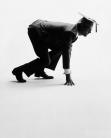Classification of Nouns
Classification of Nouns :
A noun is the name of a person, place or thing.
Nouns are divided into two classes : proper nouns and common nouns.
A proper noun is the name of a particular person, place or thing.
Examples : Lincoln, Napoleon, Ruth, Gladstone, America, Denver, Jove, Ohio, Monday, December, Yale, Christmas, Britannia, Niagara, Merrimac, Elmwood, Louvre, Richardson, Huron, Falstaff.
A common noun is a name which may be applied to any one of a class of persons, places or things.
Examples : general, emperor, president, clerk, street, town, desk, tree, cloud, chimney, childhood, idea, thought, letter, dynamo, cruiser, dictionary, railroad.
Proper nouns begin with a capital letter.
Common nouns usually begin with a small letter.
Note : Although a proper noun is the name of a particular person, place or thing, that name may be given to more than one individual. More than one man is named James. But when we say James, we think of one particular person whom we are calling by his own name. When we say man, on the contrary, we are not calling any single person by name….we are using a noun which applies, in common, to all the members of a large class of persons.
Any word, when mentioned merely as a word, is a noun. Thus, and is a conjunction.
A common noun becomes a proper noun when used as the particular name of a ship, a newspaper, an animal, etc.
Examples :
Nelson’s flagship was the Victory.
Give me this evening’s Herald.
My dog is named Rover.
The Limited Express is drawn by the Pioneer.
A proper noun often consists of a group of words, some of which are perhaps ordinarily used as other parts of speech.
Examples : James Russell Lowell, Washington Elm, Eiffel Tower, Firth of Clyde, North Lexington Junction, Stony Brook, Westminster Abbey, Measure for Measure, White House, Brooklyn Bridge, Atlantic Railroad, Sherman Act, The Return of the Native, Flatiron Building.
Note : These are (strictly speaking) noun-phrases. But, since all are particular names, they may be regarded as proper nouns.
A proper noun becomes a common noun when used as a name that may be applied to any one of a class of objects.
Examples :
The museum owns two Rembrandts and a Titian.
I exchanged my old motor car for a new Halstead.
My fountain pen is a Blake.
Lend me your Webster.
He was a Napoleon of finance.
I am going to buy a Kazak.
Certain proper nouns have become common nouns when used in a special sense. These generally begin with a small letter.
Examples : macadam (crushed stone for roads, so called from Macadam, the inventor), mackintosh (a waterproof garment), napoleon (a coin), guinea (twenty-one shillings), mentor (a wise counsellor), derringer (a kind of pistol).
A lifeless object, one of the lower animals, or any human quality or emotion is sometimes regarded as a person.
This usage is called personification and the object, animal or quality is said to be personified.
Each old poetic Mountain
Inspiration breathed around. (Gray)
Who’ll toll the bell?
“I,” said the Bull,
“Because I can pull.”
His name was Patience.—Spenser.
Smiles on past Misfortune’s brow
Soft Reflection’s hand can trace;
And o’er the cheek of Sorrow throw
A melancholy grace.—Gray.
Love is and was my lord and king,
And in his presence I attend.—Tennyson.
Time gently shakes his wings.—Dryden.
The name of anything personified is regarded as a proper noun and is usually written with a capital letter.
Note : The rule for capitals is not absolute. When the personification is kept up for only a sentence or two (as frequently in Shakspere), the noun often begins with a small letter.
Classification of Nouns :
Classification of Nouns To HOME PAGE

Related Links : Classification of Nouns